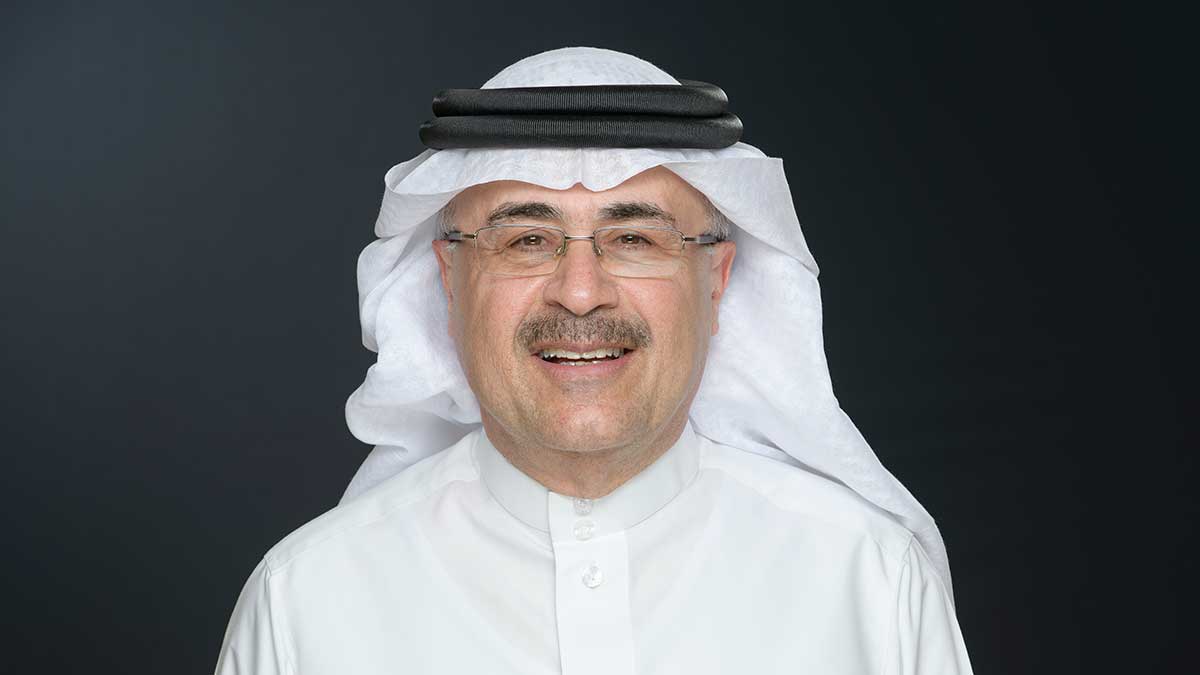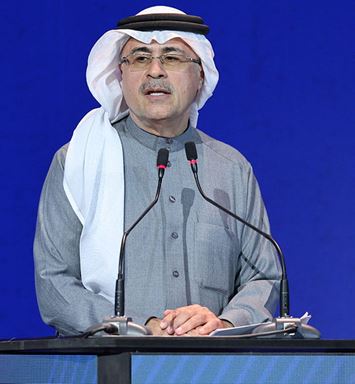Saudi Capital Markets Forum
SPEECH: Remarks by Amin Nasser, Saudi Aramco President & CEO, at the Saudi Capital Markets Forum 2023

Global February 12, 2023
“Role of Capital Markets in Shaping a Realistic and Just Global Energy Transition”
Bismillah ir Rahman ir Rahim,
Your Excellency Mohammed El-Kuwaiz, distinguished guests: good morning.
I want to applaud the Saudi Tadawul Group for holding this timely Forum and also say thank you for the invitation to share my thoughts.
Let me begin by stating the obvious.
Capital markets are critical drivers of global economic development and crucial to business growth.
And while the benefits of international capital markets clearly remain unchanged, the role of domestic capital markets is becoming even more important in an increasingly fragmented world.
What is also clear is that in some countries, capital market development is not receiving enough attention and therefore falling short of full potential.
Here in the Kingdom that is not the case, as capital market development is high on the agenda under Vision 2030.
The results speak for themselves. This is now one of the fastest-growing capital markets in the world, benefiting from an economy that is the fastest-growing among the G-20. And the Saudi stock exchange now ranks among the top globally by market cap, with Aramco’s listing being one contributing factor.
Indeed, full credit goes to the Saudi Government, the CMA and the Tadawul Group for the tremendous job they have done. Also, a special thank you to His Excellency Mohammed Al-Jadaan, who is overseeing capital market transformation as Chairman of the Financial Development Program.
As far as the future of capital markets is concerned, ESG is clearly a rising trend. And in my view, an increased emphasis on ESG is a move in the right direction.
However, if ESG-driven policies are implemented with an automatic bias against any and all conventional energy projects, the resulting underinvestment will have serious implications. For the global economy. For energy affordability. And for energy security.
Unfortunately, that is exactly what is already happening. The cost of capital for oil and gas projects has risen due to a higher perceived risk, and capital scarcity is a common phenomenon, driven by ESG.
This leads me to a core issue I want to bring to your attention: the global energy transition and how capital market participants perceive it.
Historically, capital markets have played a crucial role in the development of the oil, gas and chemical sectors. In turn, these sectors have offered fairly healthy returns.
And while the energy industry is obviously cyclical, it continues to offer very solid returns. Yet, investment in oil and gas has fallen sharply. Upstream investment in 2022 was around $400 billion — less than half of the peak in 2014.
The primary reason — pressure from multiple directions to discontinue all new investments in oil and gas. Pressure based on what I strongly believe are flawed assumptions and arguments.
Proponents of the popular energy transition narrative paint a picture of a utopian world where alternatives are ready to replace oil and gas almost overnight. Likewise, they assume the massive global energy system — including less-than-reliable electric grids in many developing countries – can be transformed instantly.
Unfortunately, too many participants in capital markets are believing this rhetoric rather than seeing the reality.
As the energy crisis in Europe has demonstrated, alternatives are not ready to shoulder the heavy burden of global demand. Indeed, the world will continue to depend on oil and gas for the foreseeable future, particularly in sectors such as heavy transport, heavy industry and power generation.
From my perspective, for a less-risky global energy transition, everyone — including capital markets — must take a more realistic view of how the global energy transition will unfold.
Now, I know that for many of you this is a tough ask. After all, decisions of investors as well as financial institutions are influenced by prevailing public sentiment.
As such, the global energy transition presents some major challenges to capital markets, but also some significant opportunities.
The opportunities are obvious given enormous amounts of capital will be required — up to $275 trillion in cumulative spending by 2050 to achieve net-zero ambitions according to some estimates.
The corresponding challenge is where all this capital will come from. Some global equity investors do recognize the current capital supply demand gap and they acknowledge more investment is needed.
But for some, any expression of interest in oil and gas is challenged by their investment committees. As a result, even projects offering solid returns will face a shortage of available capital.
Moving on, another challenge for capital markets is the difference between the developed and developing world.
In the developed world, alternative energy sources and technologies are being heavily incentivized by some governments. There is, as you know, a risk in taking a policy-driven over a market-based approach. As countries approach full-scale deployment, these incentives will become difficult to sustain because of their sheer magnitude.
Meanwhile, in the developing world, the global energy transition has major economic and social implications. Public funding of an energy transition on a scale and at a speed comparable to richer nations is simply not possible.
Emerging markets are already struggling with high levels of cost. At the end of 2020, debt in developing countries stood at over 200% of GDP… a 50-year record.
To reach net-zero ambitions globally, we clearly cannot ignore developing countries. In fact, we should all be concerned that continuing to impose unrealistic energy transition plans will lead to unintended consequences.
Consequences that include, but are not limited to, compromising affordability, creating energy insecurity. Even pushing people back to burning more coal, more wood, more animal waste. Something that is already happening.
That all said, the biggest single challenge for capital markets related to the global energy transition is striking the right balance. In particular, financing new energy sources while also continuing to support conventional energy and its decarbonization.
And I have to say, the current investment imbalance is leading us down a dangerous path.
In 2022, for example, the world committed $1.1 trillion towards the global energy transition. However, investment in two critical areas – namely carbon capture and storage and also hydrogen – accounted for less than 1% of this total.
Ladies and gentlemen, my message for you is straightforward.
Capital markets have an obvious opportunity to concurrently address the trilemma of energy affordability, energy security and sustainability.
By restoring investment in vital conventional energy sources.
By increasing investment in technologies that reduce the carbon footprint of oil and gas.
And of course, by continuing to invest in new energy sources, including renewables as well as blue and green hydrogen.
In other words, there are wide-ranging, financially attractive opportunities for you, provided you adopt a more holistic and just approach to investing in the global energy transition.
Thank you.





